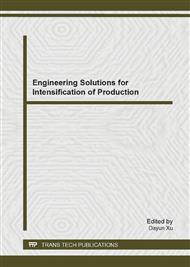p.207
p.213
p.219
p.225
p.231
p.239
p.245
p.250
p.254
Active Suspension Control of High-Performance Elevators
Abstract:
This paper addresses a comparative study concerning five control techniques applied to high-performance elevators active suspension systems, such as those employed in "skyscrapers". The main objective is to present the different control techniques and analyze the fundamental characteristics of each controller. To accomplish this, the development of the mathematical model of the controlled system is outlined and its integration with the control algorithms is presented. Besides three classic controllers (State Feedback, PID and Sky Hook), due to the significant dynamic behavior dependence on the mass of the passengers in the total mass transported, two adaptive control algorithms are used to compensate the effects of the mass oscillations of the system as the number of passengers varies along the operation cycle. Simulation results are employed to illustrate the behavior of the system when controlled by means of the presented algorithms.
Info:
Periodical:
Pages:
231-238
Citation:
Online since:
February 2014
Price:
Сopyright:
© 2014 Trans Tech Publications Ltd. All Rights Reserved
Share:
Citation:


